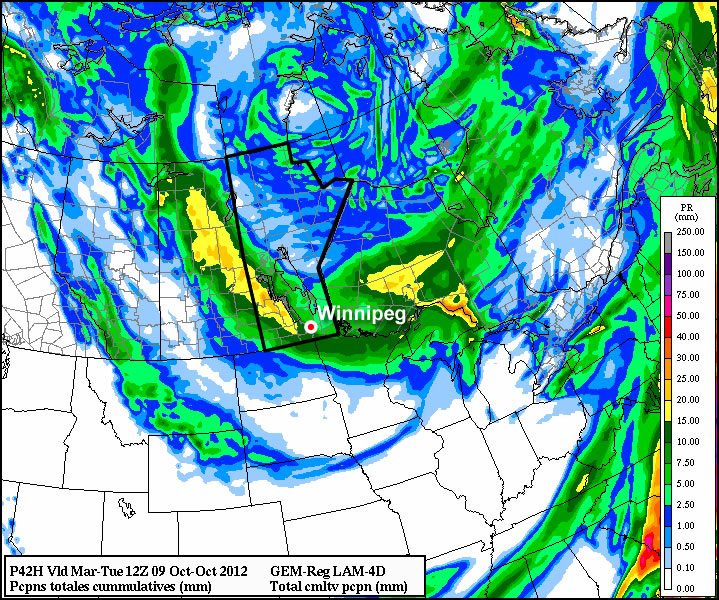Winds will pick up today out of the south as warmer air finally begins to push it’s way into Southern Manitoba. By this afternoon, strong winds will be in place over the Red River Valley and temperatures will finally climb out of the single digits under an extensive cirrus cloud deck.
Winds will pick up by early this afternoon as a warm front pushes across Southern Manitoba. Sustained wind speeds will increase to 50-60km/h, with strong gusts on top of that; mostly around 70km/h, but the potential exists for gusts as high as 80-85km/h.
The picture above is a model-based skew-T log-P diagram which shows how temperature (red line) and moisture (green line) change with height in the atmosphere over a single location. Up the right-hand side of the chart are wind barbs, which represent the wind speed & direction at that height in knots. Each full tick mark is worth 10kt, a half tick mark is worth 5kt, and a filled triangle is worth 50kt. On the left hand side, the pressure is marked from 1000mb (the surface) to 100mb (about 16km off the surface). In the skew-t log-p diagram above, we can see a strong 20kt flow out of the south with an unstable layer from the surface to about 875mb. Within this unstable layer, near the inversion, winds increase to 45kt. Since it’s within mixing distance of the unstable layer, it’s entirely possible that those strong winds could be mixed down to the surface.
Temperatures will climb to about 10°C today, but with that strong wind it’s going to feel a little cool out there this afternoon. The winds will taper off this evening as things cool off, and then we’ll enter into a fairly pleasant weekend.
We’ll be under the influence of a weak low pressure system through the weekend, however unlike most systems, very little precipitation will occur near the system; instead most of the precipitation will be displaced northwards, into the high Interlake region, where frontogenetic forcing is stronger. What that means for us, fortunately, is that we’ll see relatively light winds through the weekend, a mix of sun and clouds and daytime highs in the low-to-mid teens. Overnight lows will be bumped up a little bit from the -3 to -5°C range to just at or above 0°C.
This weekend will be a pleasant break from the cold. Best to get out and enjoy it too; next week looks to bring multiple systems that could bring us some more rainy, windy weather.






